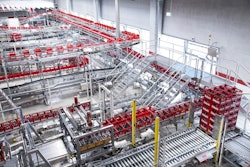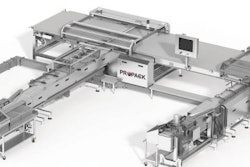
Driven by e-commerce, retail continues to evolve, and sales channels and traditional packaging continue to blur. Fundamental change is taking hold on how product is sold and delivered to consumers. Consistent with most change, it’s creating both headaches and opportunities for professionals in packaging, supply chain, marketing, and beyond. As we grow into this new era of retail it seems the packaging industry has likely been heavy on the headaches, but e-commerce has also provided an opportunity to bring the power of packaging back into the spotlight and reinforce its value. In order to capitalize on this opportunity, it’s important to understand the significant difficulties e-commerce and omni-channel retail pose to packaging design.
Increased complexity is responsible for driving most challenges facing package design for omni-channel retail. It has been documented, but remains worth noting, that the traditional retail distribution chain journey from manufacture to brick-and-mortar retail store typically involves approximately five to seven touch points. The “direct-to-consumer” distribution chain disrupts this traditional journey resulting in longer transit legs and more touchpoints. “Direct” shipment to the consumer often involves 20 or more touch points. A portion—sometimes a substantial one—of the journey to one’s doorstep will occur at the single package level where orientation is uncontrolled. This creates new design hurdles for many legacy packaging systems. It is extremely rare to find a packaging system designed for sale through a traditional brick-and-mortar channel that is also suitable for shipment to consumers via a parcel carrier like FedEx, UPS, USPS, or DHL. Gaining an understanding of the dynamics involved with e-commerce and omni-channel retail, and the resulting hazards they pose to packaged-products, is critical to designing optimized packaging for today’s environment. Failing to do so can have large implications on damage rates, brand loyalty, and environmental impact.
Not only are distribution chains becoming more complex, but so is the role that distribution packaging plays in brand equity. The customer now experiences the full impact of design decisions at every level of the packaged-product system, including the distribution packaging. Therefore, distribution packaging should no longer be an afterthought in the packaged-product design process. There is no store to remove and dispose of distribution packaging or filter out damaged product. The intensity of distribution hazards also increases when compared to simply designing for traditional brick-and-mortar. More handling means more shock, whether it be from automated systems or manual handling. Extended distribution chains translate to more vibration and compression. These challenges considered, one must ask, ‘what does the distribution packaging communicate to the customer? Is my current packaging system protecting the product against increased distribution intensity? What type of “un-boxing” experience does it facilitate? Can the package be easily returned? How does the consumer deal with the packaging end-of-life? Does the package need to fit through a mail slot? Does it need to fit in an anti-theft locker or container? Does the entire system properly communicate the brands identity and message?’ The list doesn’t stop there. There are many design questions to consider that weren’t part of the discussion when only considering sale off of a store shelf.
Conventional wisdom leads us to believe that products with larger margins and higher product values like appliances, toys, and consumer electronics will have an easier transition from in-store to on-line packs than those with miniscule margins and low product values. As one attendee from a food company noted at the ISTA Omni-Channel Packaging Strategies Conference last fall, we can talk about increasing product protection, enhancing the un-boxing experience, and easing the packaging end-of-life for consumers all we want, but how is any of this going to make sense, financially, for a sleeve of crackers? This is one of many challenges that lie ahead for packaging professionals and e-commerce. The challenge is global and shared across industries. As such, it’s important that we, as an industry, find opportunities to collaborate and keep pace. Share successes and failures, build on and connect ideas, learn from those in industries with whom we don’t compete yet share the same e-commerce or omni-channel challenge and focus on taking advantage of packaging’s latest opportunity to demonstrate its immense value.
Andrew J. Gruber is President of ISTA (International Safe Transit Association).
ISTA is a non-profit, member driven association for the packaging and logistics sectors. For over 70 years, ISTA has helped its members control costs, damage, and resources during the distribution of packaged-products. ISTA’s members include product manufactures, carriers, suppliers, testing laboratories and educational and research institutions.


























